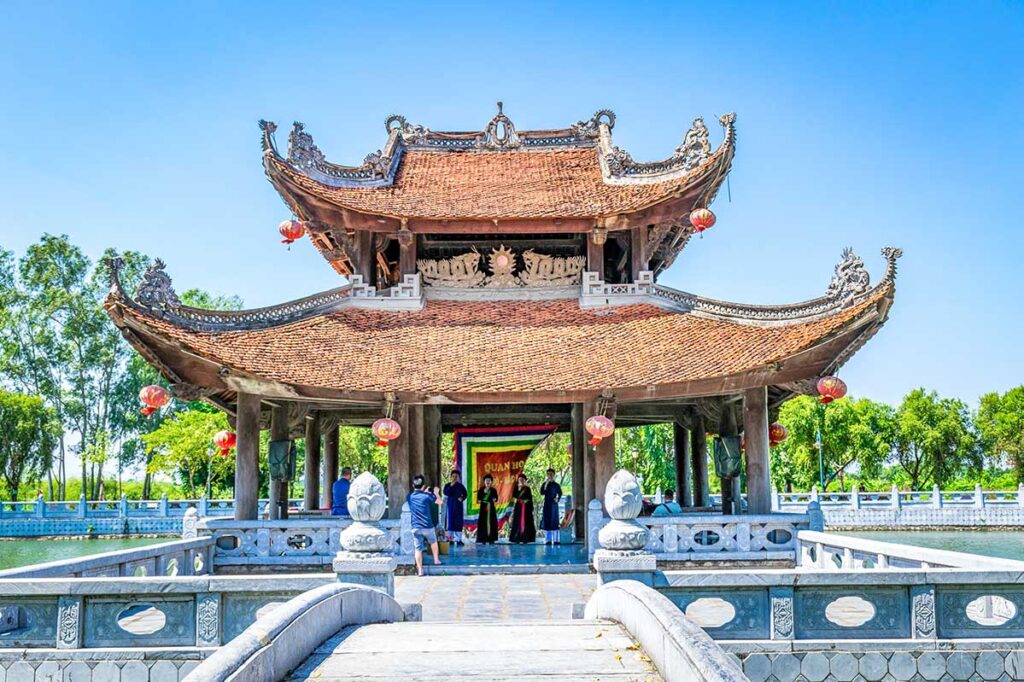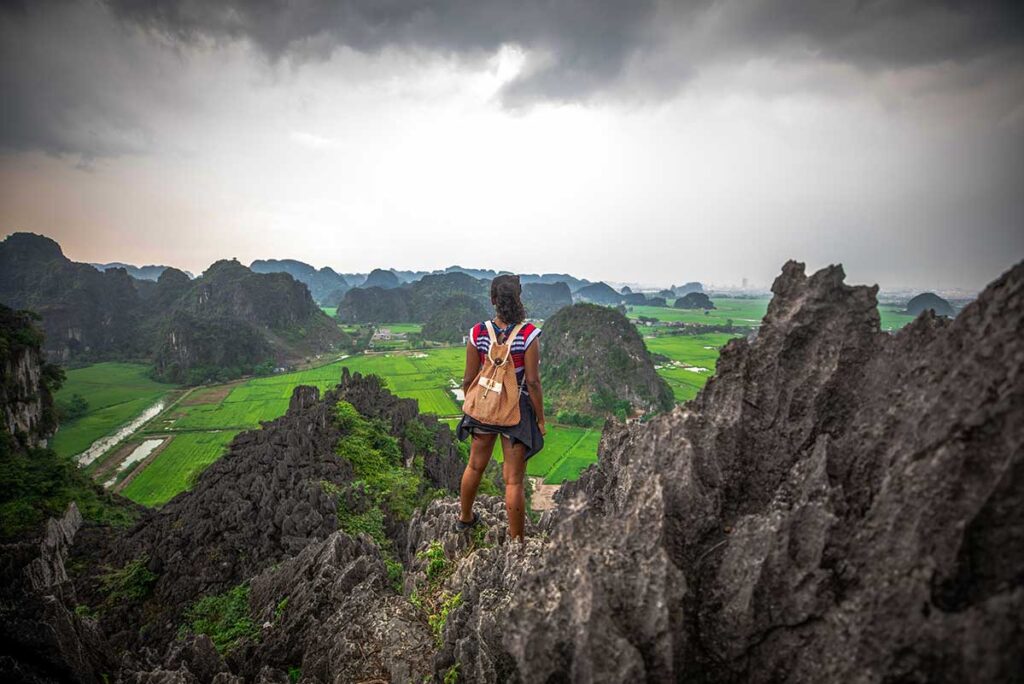What is Do Temple?
Do Temple is a sacred temple complex dedicated to the eight kings of the Ly Dynasty, who ruled Vietnam from 1009 to 1225. It is also known by other names, including Den Do, Ly Bat De Temple (meaning “Temple of the Eight Ly Kings”), and Co Phap Dien, a reference to its historic location.
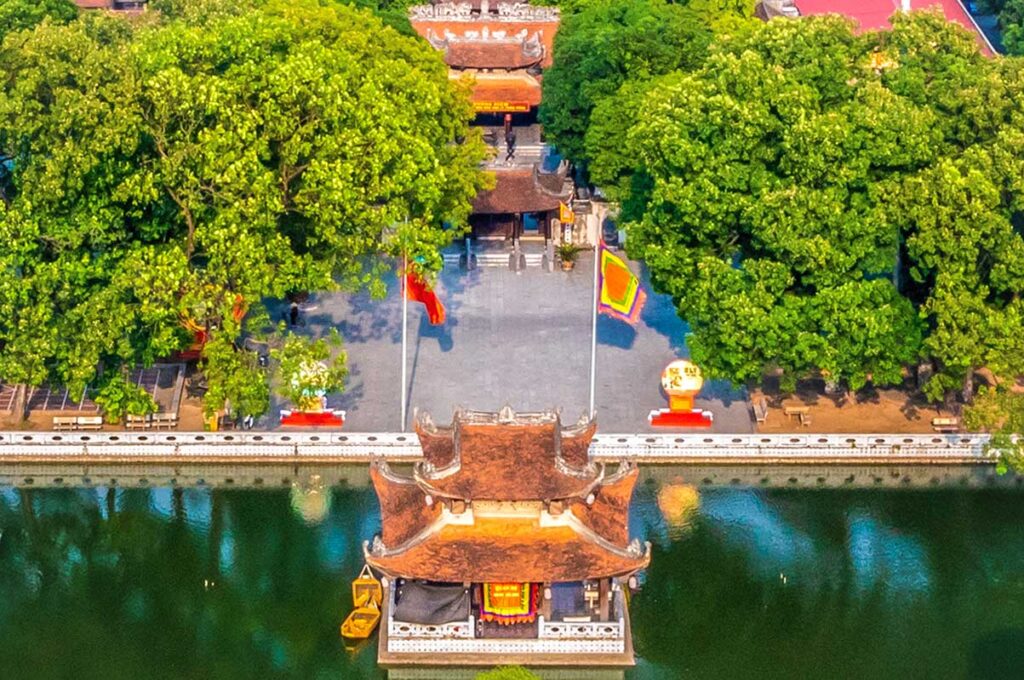
The temple holds a special place in Vietnamese royal history as it was built to honor Ly Thai To—the first Ly emperor—and later expanded to worship his royal successors. Though not as widely known as some other spiritual landmarks, it remains an important site for those tracing the roots of Vietnamese dynastic rule and Confucian tradition.
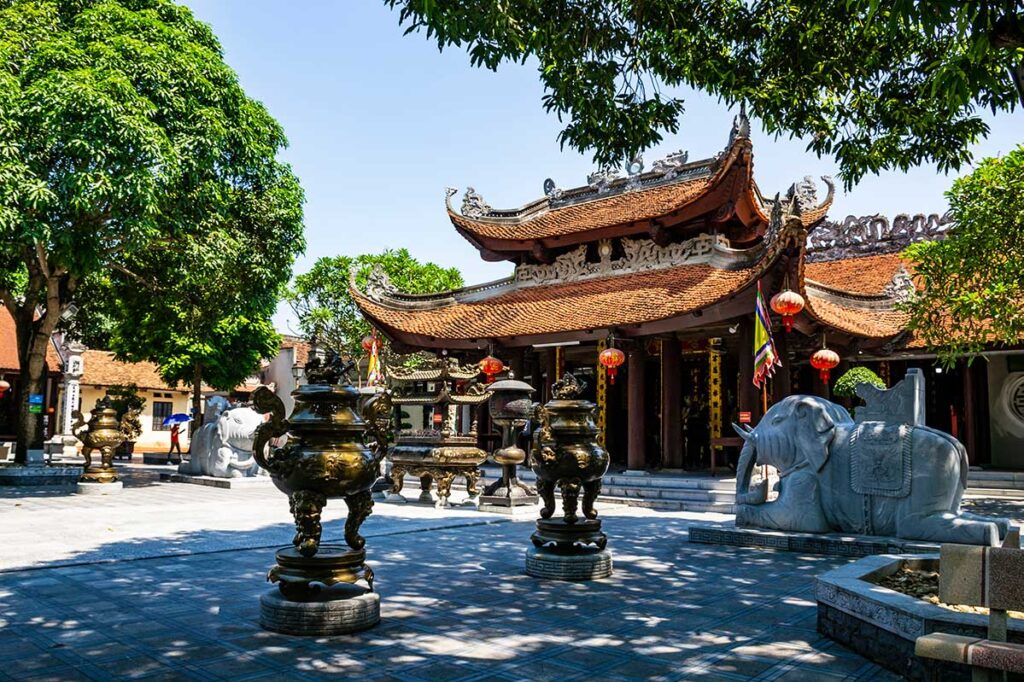
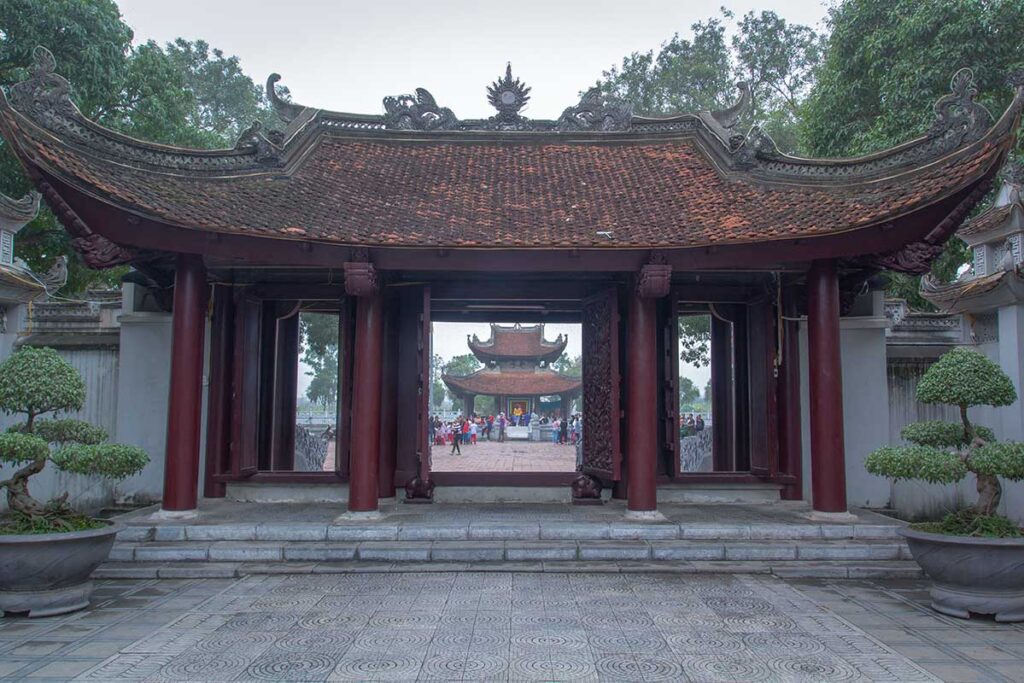
Do Temple is located in Dinh Bang Village, considered the hometown of Ly Thai To. The area also lies within the cultural heartland of Quan Ho folk singing, a traditional art form from Bac Ninh that has been recognized by UNESCO as Intangible Cultural Heritage, adding even more cultural significance to a visit.
History of Do Temple
Do Temple was built in 1030 by King Ly Thai Tong, the second ruler of the Ly Dynasty, to honor his father Ly Thai To, who had passed away two years earlier. Ly Thai To is remembered as the founder of the dynasty and the one who moved Vietnam’s capital from Hoa Lu to Thang Long (modern-day Hanoi) in 1010.
The temple was constructed in Dinh Bang, the king’s hometown, on a site known as Son Lang Cam Dia, which became a sacred mausoleum area for the Ly royal family. Over time, the temple grew to honor not just Ly Thai To but all eight kings of the Ly Dynasty, making it a unique site of royal ancestral worship.
During the war against the French in 1952, the temple was heavily damaged. What visitors see today is a careful restoration completed in 1989, using references from earlier reconstructions—especially from the 17th century under the Le Trung Hung period.
The temple also has a strong natural and spiritual connection to its surroundings, particularly the Tieu Tuong River and the historic Bang forest, which once framed the original landscape and contributed to the site’s symbolic significance.
Location and How to get there
Do Temple is located in Dinh Bang Village, Tu Son City, in Bac Ninh Province—just 20 to 25 kilometers northeast of Hanoi. It’s one of the easiest cultural day trips from the capital and can be combined with other sites in the area.
Getting there:
Private car with driver: This is the most comfortable and convenient way to visit Do Temple. It takes about 45 minutes to 1 hour from Hanoi, depending on traffic. A driver can also wait while you explore and take you to other nearby places like But Thap Pagoda or Dong Ho painting village.
Motorbike: Confident riders can reach Do Temple by motorbike from Hanoi. The easiest route is via QL1A, heading north toward Tu Son City. Expect local traffic and a few confusing turns—so it’s best with GPS or offline maps.
Nearby sights to combine:
- But Thap Pagoda – one of Vietnam’s most beautiful wooden pagodas.
- Dong Ho Village – known for its traditional folk woodcut paintings.
- Bac Ninh city center – with temples, pagodas, and local food options.
Architectural highlights of Do Temple
The Do Temple complex is divided into two main areas: the inner temple grounds, where the kings are worshipped, and the outer area, which includes ceremonial structures and lakeside pavilions. The architecture blends royal design with folk influences and includes intricate stone and wood carvings throughout.
1. Inner Area (Temple Grounds)
The inner section is where most of the main worship structures are located. It’s quiet, shaded, and feels quite atmospheric—especially in the early morning.
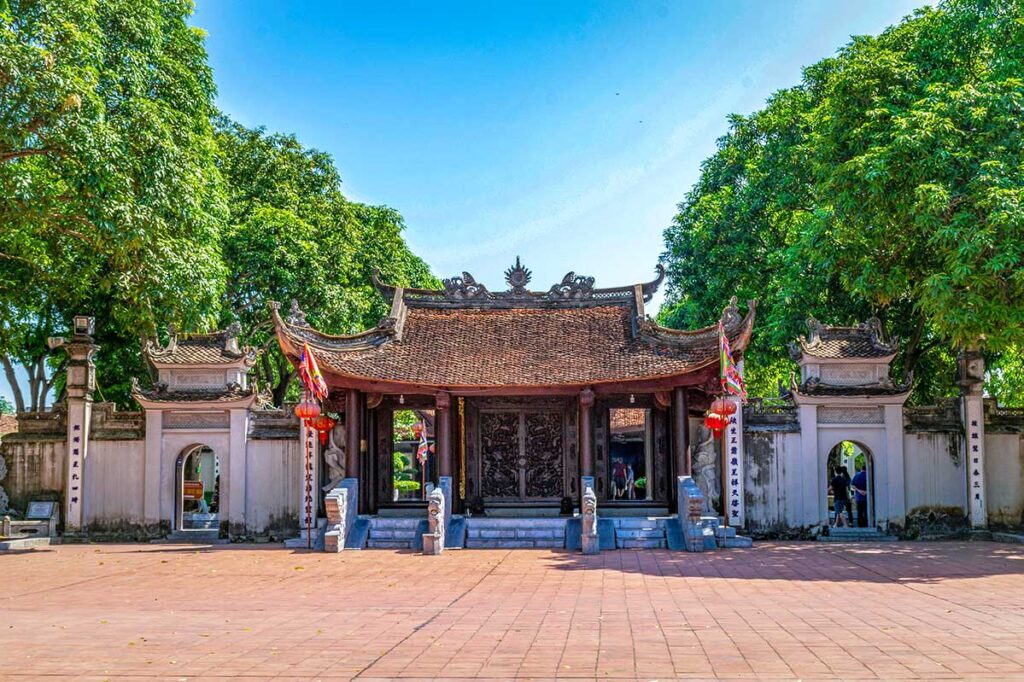
Ngu Long Mon Gate: The entrance to the temple grounds. Its name means Five Dragon Gate, and you’ll see dragon carvings symbolizing strength, power, and royal authority. The gate opens onto a wide courtyard, often lined with incense smoke.
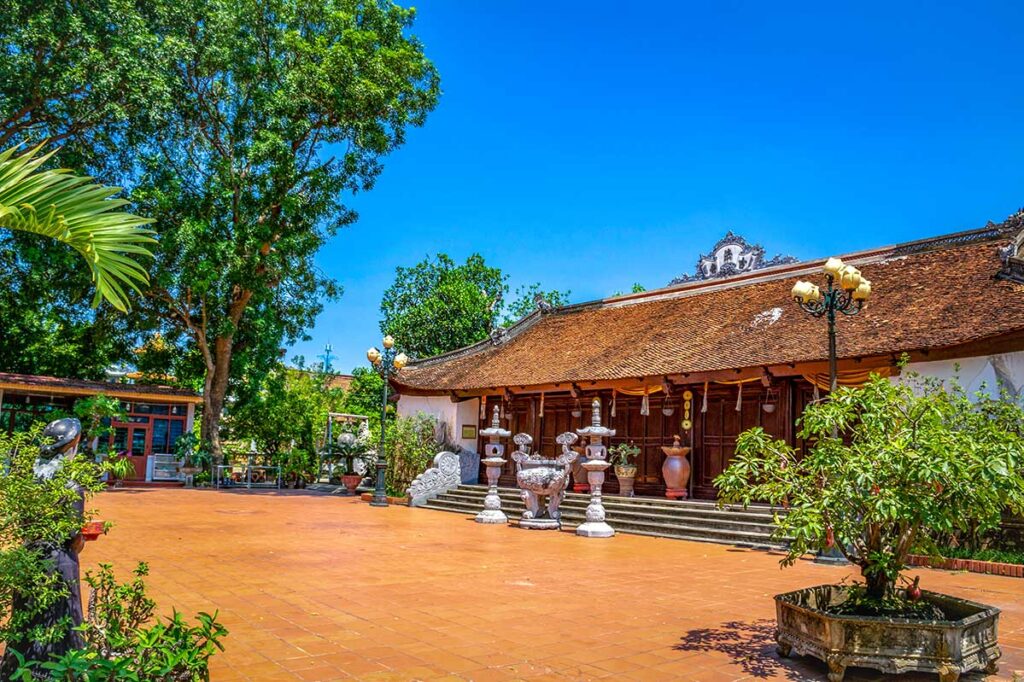
Phuong Dinh and Tien Te House: These two structures form the ceremonial heart of the temple. Phuong Dinh (the square house) has eight traditional tiled roofs and leads into Tien Te House, where Ly Thai To—the first Ly emperor—is worshipped.
Hall of the 8 Ly Kings: The main ceremonial space contains statues and thrones of all eight Ly Dynasty kings. The hall is arranged by family lineage, with Ly Thai To in the center.
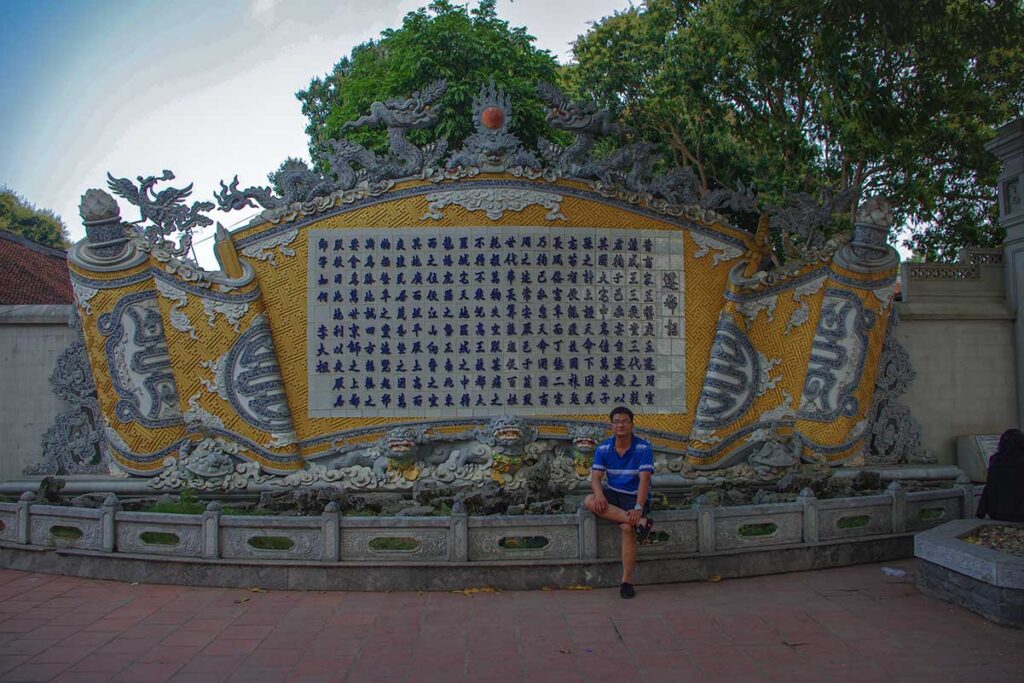
Chieu Doi Do Royal Proclamation: Hanging on a wall is a large reproduction of Ly Thai To’s 214-word royal decree announcing the move of the capital from Hoa Lu to Thang Long (Hanoi). Each word represents a year of Ly rule.
Bat Trang Ceramic Panel: This impressive ceramic calligraphy piece is said to be the largest of its kind in Vietnam. Glazed in Bat Trang green, it displays classical Chinese characters and stands several meters wide and high. It’s a unique piece of temple art, not something you see often in other temples.
2. Outer Area (Surrounding Structures)
Beyond the main temple halls, the outer area includes a lake, pavilions, and smaller shrines—each with a distinct function in royal worship.
Other structures: Scattered around the complex are a guest hall, ceremonial warehouse, and the Temple of King Ba, which is dedicated to the mother of Ly Thai To.
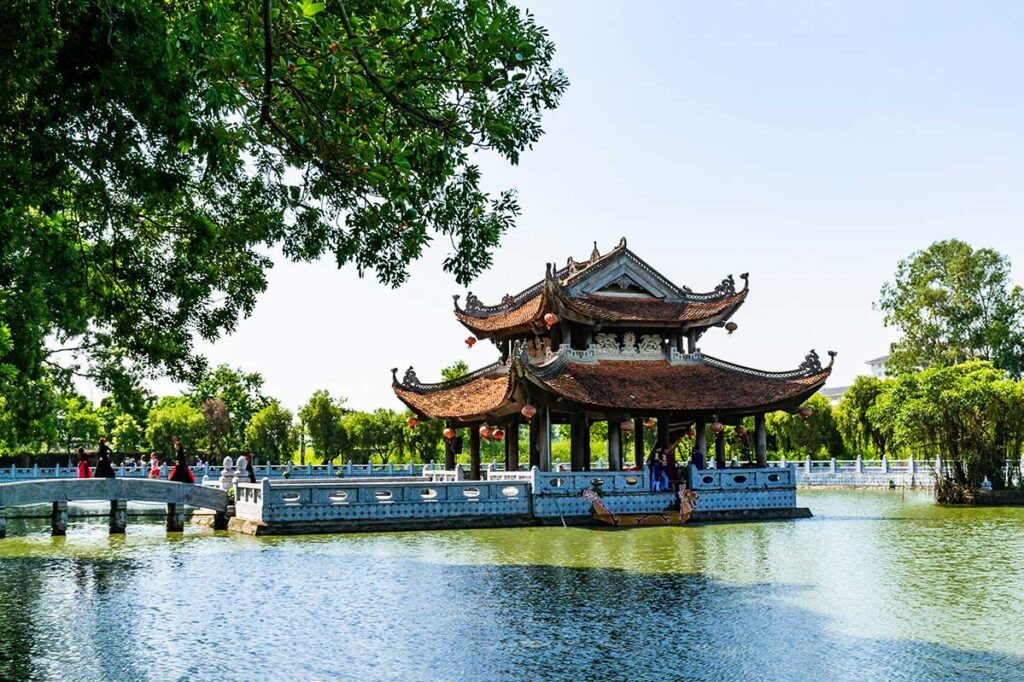
Thuy Dinh (Water Pavilion): Built in the middle of a semicircular lake, this open-air structure was traditionally used for water puppet performances viewed by royal officials. During the French colonial era, it was even featured on Indochina banknotes—a sign of its cultural importance.
Van Chi House: Located to the left of the temple, this hall honors famous civil mandarins of the Ly Dynasty such as To Hien Thanh and Ly Dao Thanh. The structure is modest but symbolic.
Vo Ca House: On the opposite side, Vo Ca is dedicated to military mandarins like Ly Thuong Kiet and Le Phung Hieu. Both Van Chi and Vo Ca reflect the Confucian ideal of balancing civil and military merit.
Practical Information
- Opening hours: Usually open during daylight hours, but not always consistent.
- Entrance fee: Free or a small donation.
- Dress code: Modest clothing recommended (shoulders and knees covered).
- Facilities: Simple—there are rest areas, incense stalls, and sometimes a few vendors.
- Nearby food: Local eateries are available in Tu Son town, just a few minutes away.
- Best time to visit: Early morning for quiet; festival time (third lunar month) if you’re interested in traditional culture.
Travel tips
- Combine with other Bac Ninh sights like But Thap Pagoda or Dong Ho painting village to make a half-day or full-day trip.
- Hire a private car with driver for comfort and flexibility, especially if visiting more than one place.
- Consider a local guide if you’re interested in the history of the Ly Dynasty—especially if you’re also visiting sites like Hoa Lu or the Thang Long Imperial Citadel in Hanoi.
